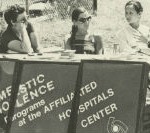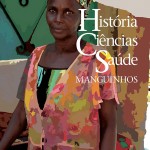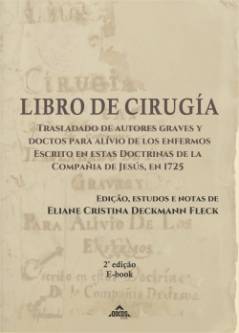First published on August 2018 / updated on September 2019
Vivian Mannheimer | HCSM blog and Thomas Cauvin|International Federation for Public History
From 18 to 22 August 2020 historians will gather in Berlin at the 6th World Conference of the International Federation for Public History (IFPH).

Thomas Cauvin is Assistant Professor of History at Colorado State University and President of the International Federation for Public History.
To shed some light on the topic of Public History, we share an interview we made one year ago with Thomas Cauvin, President of the International Federation for Public History.
According to him, public history is based on three main aspects: communicating history to large audiences, including the public in the history making process, and applying historical methodology to present-day issues.
“I always say that public history is a process, a way of doing history that often ends up in a product, be it an exhibit, a collection, a film, a guided-tour, the preservation of a site/building, or a website.”
In this interview to our blog, Thomas Cauvin said that Science, health and medicine are vibrant topics of public history.
Could you tell us a little bit about public history and its importance for historical research?
Doing history in public is a very old and widespread practice. Public history as a discipline – with training, programs, projects, journals, publications, and conferences – is much more recent. Coined in the 1970s, public history came from the wish to better connect professional historians, practitioners in the field, and members of the public. Public history practitioners make history more participative, more accessible, and more useful to the present. Public history is based on three main aspects: communicating history to large audiences, including the public in the history making process, and applying historical methodology to present-day issues.
When I present public history I always say that public history is a process, a way of doing history that often ends up in a product, be it an exhibit, a collection, a film, a guided-tour, the preservation of a site/building, or a website. In public history, we do not only study the past, we produce interpretation through different public projects. In doing so, public history connects and sometimes applies historical research to the present. As the objective is to better connect the different actors of the history-making process, most of the projects take place outside universities, in archives, libraries, museums, historic buildings, historical and memory parks, schools, and on the Internet.
Public history not only makes historical research more relevant and accessible to the general public, but it also changes the overall conception of history. As communicating to and with the public is crucial, historians pay much more attention to the medias and tools to share their research. Public history is asking historians to reconsider their role in our contemporary societies. How does the Internet revolution and the democratization of access to knowledge change the role of historians? How can historians better share their authority with the public and participate in contemporary public debates? In order to do so, public history courses should be part of every history training in which students could learn the theories and practices to make history more relevant and accessible.
You are the President of the International Federation for Public History. What are the current trends in this field?
The International Federation for Public History (IFPH) is a young organization that reflects the increasing popularity of the field. Created in 2011, the IFPH has now almost 200 members coming from every continent. We have organized annual conferences in Holland, China, Colombia, Italy, and Brazil. In South America, we are proud to partner with the Rede Brasileira de História Pública with whom we organize our 2018 annual conference. In addition to the very active networks in Brazil, there are projects in Colombia, Chile, and Argentina. There are now books and articles on public history published in English, Portuguese, Polish, Italian, German, and Spanish. The role of the International Federation is to support and connect those various initiatives and to present how public history projects and training can help historians and practitioners to better connect with the public. Through our blog – Bridging – a team of public history students work as editors and propose international discussions on the field. Likewise, we have gathered public history explorers – from 22 different countries – who keep track, collect, and publish news about public history all around the world.
Even though public history is more developed in English-speaking countries, the International Federation works very hard to enrich the field with a diversity of approaches and languages. For instance, we are about to publish the first issue of International Public History, a peer-review e-journal that accepts proposals in almost every language. Likewise, Bridging – our blog – can publish posts in a variety of languages. Our role is to enrich international public history with a variety of languages and approaches. In order to do so, we also support local and national projects. We participated in the creation of the Italian Association for Public History – the first national association of public history in Europe – that has now more than 400 members and organizes annual conferences, workshops, and projects. Through collaboration with local partners, we participate in events such as summer schools, workshops, and training sessions. Those partnerships are particularly useful for the creation of public history courses and programs in universities and cultural institutions.
Can you highlight interesting initiatives to communicate historical research to the general public?
As public history is defined by a process rather than a specific topic, the range of opportunities is endless. We can quote projects that communicate historical research to the general public through blogs, podcasts, and new media. For instance, historian Liz Covart produces Ben Franklin’s World, an award-winning podcast on early American history. YouTube history channels – such as NotaBene in France with more than 750,000 followers – offer easy public access to a variety of topics. Many cultural institutions also use social media to publish and promote their collections and special projects. In addition to new media, some public history practitioners perform and discuss history in public spaces, streets, coffee stores and other popular sites. For example, in Bogotá (Colombia), the group Historias Para Lo Que Viene organizes “Clases en la Calle para construer paz” in which historians are invited to bring their classes to public space to discuss difficult topics. Public history encourages historians to find new ways to mediate their research and to make it accessible to the general audiences.
Other projects encourage public participation. For instance, the 9/11 digital archives in the United States asks the public to take part in the collect and digitization of documents about the attacks. In France, the 1 Jour – 1 Poilu project asks participants to help transcribe the 1.3 million files of the French soldiers who fought during the First World war. In my own work, I have organized public collects – called History Harvests – in which we ask members of the local communities to participate in the creation of new historical collection that would be later stored and exhibited in public institutions.
Finally, some historians apply their research to present-day issues. As advisors or consultants, historians can create their own consulting companies or work in-house for public or for-profit companies. It is fantastic to see that former students from the public history program in Paris created a consulting company (Boite à Histoire) that is now organizing a public history festival about the 1848 Revolution with not only public debates and conferences but also re-enactments, escape games, and theater plays. In the United States, it is not rare for historians to testify as expert witness in trials – mostly about land issues – or to be hired as consultants by law companies to provide research services. Ramses Delafontaine recently published a study of historians who work as expert judicial witnesses.
How do you believe that historians of science, health and medicine can contribute to the field of public history?
Science, health and medicine are vibrant topics of public history for many reasons. First, the concept of public history shares many similarities with the field of citizen-science. Scientists have been very innovative in finding ways to better communicate with and involve the public in their research projects. Besides, science, health, and medicine are everyday-life topics that historians can use to reach new audiences. For instance, many institutions and historians engage with the topic of disability. In an article in the History Workshop Journal, historian Ludmilla Jordanova explores “Public History and the Public Understanding of Medicine: the Case of Embryology”.
Medicine and health also allow historians to deal with present-day debates and social justice. Nursing Clio is “an open access, peer-reviewed, collaborative blog project that ties historical scholarship to present-day issues related to gender and medicine.” In addition to connecting historians with care workers, community activists, and the public at large, Nursing Clio uses history to inform current debates on medicine and gender issues in the United States. The links between science, health, medicine, and public history are so strong that the University College of London offers a specific module called “The public history of science, technology, and medicine”.
How to cite this interview:
Cauvin, T; Mannheimer, V. History to large audiences. História, Ciências, Saúde – Manguinhos blog, 2017. http://www.revistahcsm.coc.fiocruz.br/english/the-new-bundestag-refugees-and-health/
Cauvin, Thomas. The Rise of Public History: An International Perspective. Historia Crítica, issue 68 April 2018.
Salgado, Maurício de Mattos and Marandino, Martha. “The sea in the museum: a perspective on education at aquariums.” Hist. cienc. saude-Manguinhos [online]. 2014, vol.21, n.3, pp. 867-882.
Souza, Vanderlei Sebastiao de; Dornelles, Rodrigo Ciconet; Coimbra, Carlos E.A. and Santos, Ricardo Ventura. “History of genetics in Brazil: a view from the Museu da Genética at the Universidade Federal do Rio Grande do Sul.” Hist. cienc. saude-Manguinhos [online]. 2013, vol.20, n.2
Ballestero, Diego A.. “Los ‘fueguinos’, Robert Lehmann-Nitsche y el estudio de los onas en la Exposición Nacional de Buenos Aires (1898).” Hist. cienc. saude-Manguinhos [online]. 2011, vol.18, n.3.
Tagüeña, Julia. “Los museos latinoamericanos de ciencia y la equidad.” Hist. cienc. saude-Manguinhos, 2005, vol.12.








